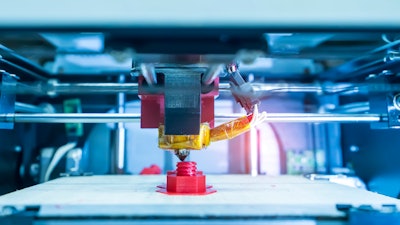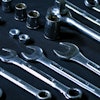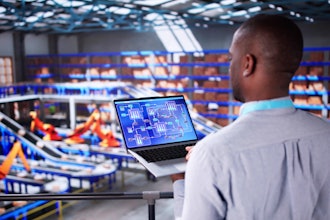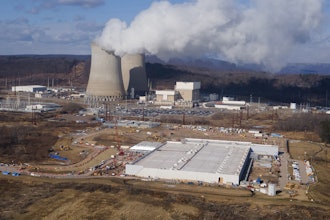
Individuals and businesses are becoming increasingly aware of the importance of sustainability, in turn making it a bigger part of our daily lives.
This now extends to the production sector, driven forward by end customer demands and new industry regulations. In this feature, a look at how additive manufacturing can offer an efficient and environmentally friendly solution for production and supply chains.
Additive manufacturing allows sustainable design
AM offers a whole new way of designing products which allows the creation of topology optimized designs. By redesigning, the 3D printed part can accomplish the same task, and even improve the performance compared to the original part, while using less material. Companies can therefore also improve a part consisting of several pieces and print it in only one unit (part consolidation). This results in less material and energy consumption during production compared with traditional methods. In turn, this reduces time spent as less parts need manufacturing and assembling. Additionally, part consolidation can offer better performing parts with increased durability.
AM can drastically reduce material consumption during production
In production, manufacturers look at two essential factors: material consumption and energy efficiency. In traditional manufacturing methods there is always material waste. For example, in subtractive manufacturing, like CNC, manufacturers start with a block of solid material and remove material to achieve a final shape. In AM however, the material usage is much more efficient.
Fused Deposition Modeling (FDM) provides a good example; parts are built layer by layer, adding only the material that is needed, so other than support structures there is no wasted material. Other AM technology using powders or resins works differently. In powder and resin-based AM a full layer of material is built, which is then processed by a laser or fusing agent, dependent on the used technology. After the first material layer is processed, a new full layer is added until the part is finished. As any unprocessed powder or resin can be reused for the next print, it is possible to achieve no material wastage.
Conversely, support structures and failed prints are often needed, especially for more complicated parts. It is common for test parts to be wasted before finding the right printing parameters and build orientation. However, developments in simulation now allow us to predict potential printing issues beforehand, therefore reducing waste in production.
Looking at the energy consumption during production, is AM really sustainable?
Due to very individual use cases, the answer for this is not simple. Differences in machine, product and process characteristics make comparability of traditional methods and AM difficult. Compared with subtractive methods, AM can be more energy efficient, especially when considering the lesser material consumption. However, compared to injection molding, energy consumption of AM is generally acknowledged to be higher due to a much longer production time per part. However, other factors such as energy consumption in producing the mold, production volume and material efficiency must be considered. When looking into lower volumes, AM is a more energy efficient option.
The production on-demand will reduce waste in warehousing
As well as during production, AM also delivers sustainability benefits in the supply chain. Other manufacturing methods often require a minimum lot size to make production cost efficient, often leading to overproduction and parts stored as inventory. This not only increases storage costs, but also potential wastage if the parts are not sold. For companies offering spare parts, this can be a huge problem. Companies are usually bound to suppliers, who often stipulate huge minimum order quantities, even if only a few spare parts are needed.
With AM it is possible and affordable to produce only the number of parts that are needed. No huge inventories need creating because the parts can be produced on demand. Replique’s 3D4U project with Miele demonstrates this well, where Miele’s end-customers can order parts via Miele’s online shop which are then printed and shipped straight to the customer. All within a promised total lead time of five working days, including shipping, it shows that AM can offer fast and affordable parts while avoiding waste.
Minimized transport routes will reduce CO2 emissions
The introduction of AM has produced a shift from linear manufacturing, with centralized distribution, to a decentralized network of suppliers, production partners and customers. This is enabled by low investment costs, as one machine can produce a variety of parts. Minimizing transport movements of course comes with a positive impact for the environment, as the carbon footprint of each part is reduced. Parts are then shipped to wherever they are needed, which could be on the other side of the world. This also reduces lead time, especially beneficial in times of supply chain disruptions.
So, in summary, incorporated as part of a print on-demand model, AM can reduce a company’s energy consumption, material waste and carbon footprint. This also comes with benefits to supply chain operability. Traditional supply chains require several steps, each prone to disruption, whereas AM shortens the supply chain and makes it more resilient.
Max Siebert is the co-founder and CEO of Replique.






















